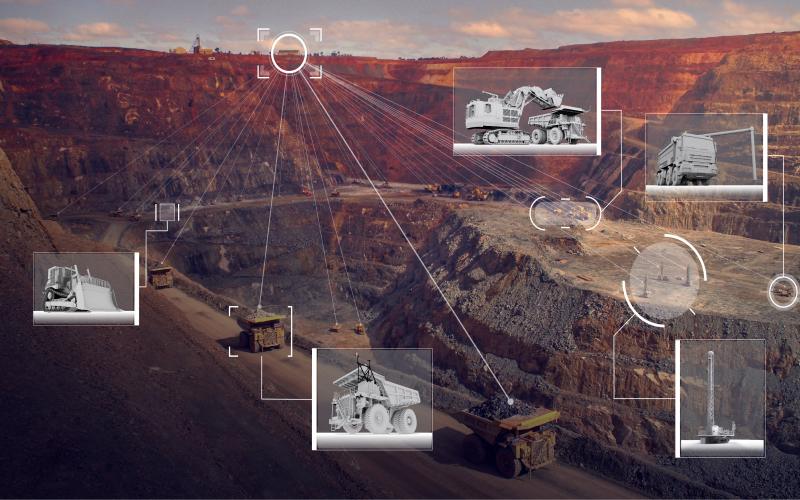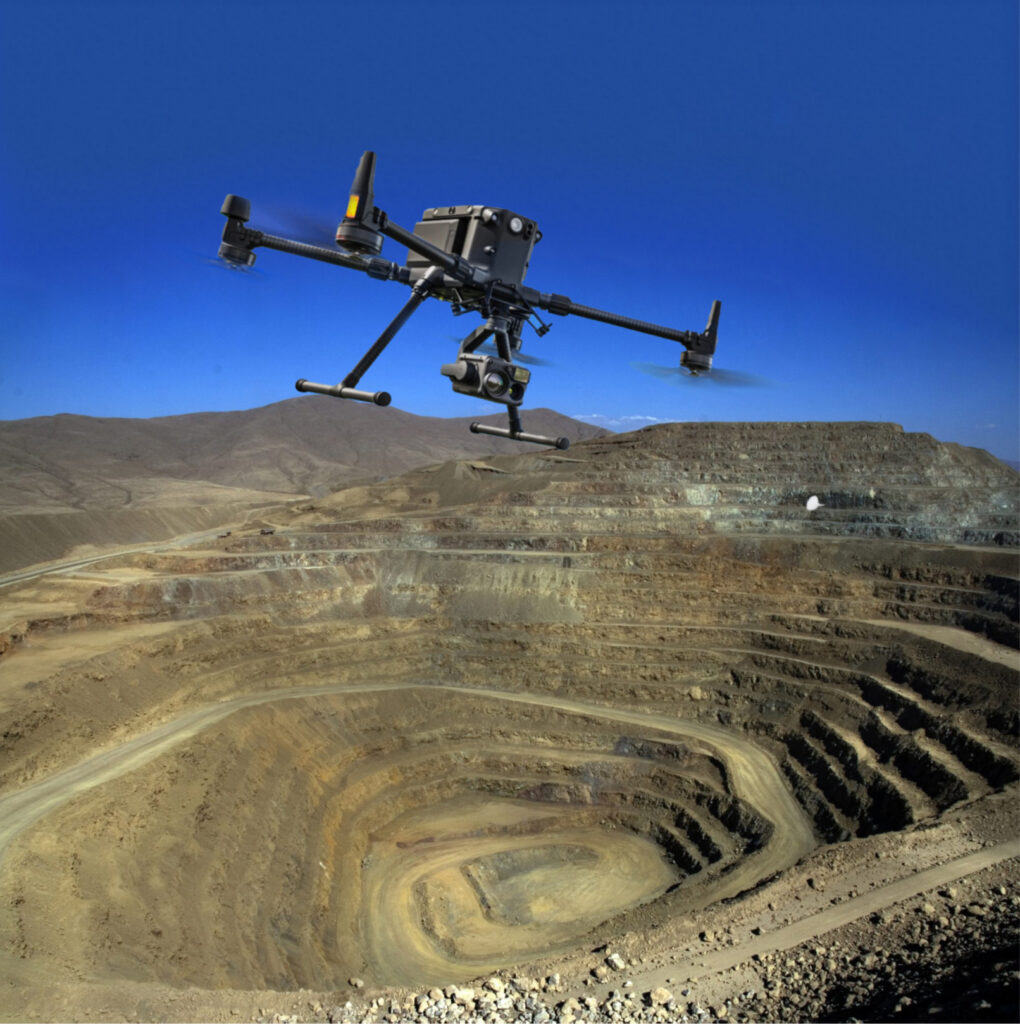Traditional mining must be replaced by new methods of mineral processing that do not involve the use of chemicals, use alternative energy sources and minimize the impact on the soil.
These innovative approaches improve the sustainability of the mining industry and reduce negative effects on the environment. Through the use of advanced technologies and more responsible practices, it is possible to achieve the extraction of minerals in a more efficient and respectful way with the environment.
In today’s world, there is a pressing need to relegate traditional mining to the annals of the past, replacing it with cutting-edge methods that transcend the limits of convention.
Technological advancement provides us with an unprecedented opportunity to responsibly and sustainably extract precious minerals from the ground, ditching harmful chemicals and embracing alternative energy as the driving force behind this transformation.
In this age of environmental awareness, we must ensure the protection of our soils, using techniques that greatly minimize the negative impact that has traditionally accompanied the extraction of minerals.
It is time to challenge the paradigms and enter a new era of mineral extraction, where harmony between human development and care for our environment is the fundamental axis of our actions.
An alternative to traditional mining is the extraction of minerals without chemical products, where the use of toxic substances and pollutants in the extraction process is avoided.
Instead, mechanical and technological methods are used that minimize the generation of waste and the release of pollutants into the soil and water. These techniques include gravity separation, flotation, and cyanide-free leaching, among others.
Technologies in the extraction of minerals: Robots and autonomous trucks change the Game
The mining industry is constantly evolving and new technologies are being developed to improve the efficiency and safety of mineral extraction operations. These technologies include IoT, robotics, and artificial intelligence, which are used to improve safety and efficiency.
Examples of pioneering techniques in mineral processing : Automated mining equipment:
Mining companies are using automated trucks and robots to automate dangerous tasks, reducing the risk of accidents
Predictive Analytics: Artificial intelligence in the mining industry can predict process failures and optimize monitoring efficiency, replacing humans in hazardous conditions
Proximity Sensing Systems: Mine operators are increasingly installing proximity sensing systems on mineral extraction equipment in open pit and underground mines to prevent crushing or impact accidents.
LiDAR drones: These drones use light sensing and ranging technology to create highly accurate three-dimensional maps of mining sites, which can be used to measure distances and create three-dimensional models.
Thermal drones: Thermal drones are equipped with thermal cameras that can detect heat signatures, which can be used to identify hot spots in mining operations, such as overheating equipment or potential fires.
Delivery drones: Delivery drones are used to transport small items, such as tools, spare parts, and samples, between mining sites.
Mining of the Future: The convergence of IoT, Robotics and Artificial Intelligence in action
Mineral processing is an essential part of the mining industry, and new technologies are being developed to improve the efficiency and safety of mineral processing operations.
Mineral extraction has been used to improve mining safety and efficiency in recent decades, as well as new technologies that are currently being developed for future use.
In recent years, new methods have been developed to extract minerals from the ground that are more efficient, cost-effective, and environmentally friendly. One of these methods is in situ leaching (LIS), also known as solution mining or in situ recovery (RIS).
LIS involves leaving the mineral where it is in the ground and recovering the minerals by dissolving them and pumping the concentrated solution to the surface, where the minerals can be recovered. This method has several advantages over conventional mining, including minimal surface disturbance, no waste rock generated, and lower operating costs.

Advances in mine tracking technologies have allowed operators to track the location of their underground personnel, as well as monitor equipment performance.
This technology uses unique RFID tags that are attached to equipment or miners and monitored through radio communication systems. This is particularly helpful in ensuring compliance with safety regulations and training procedures, which is essential to the success of mining operations.
Autonomous robots exploring dangerous areas underground
Autonomous robots are another way to improve mining safety. Autonomous robots can explore dangerous areas underground and detect dangerous conditions before they occur.
This technology allows mines to go deeper underground than ever before, as robots can safely handle hazardous materials and reduce the risk of workers coming into contact with them.
Additionally, these robots are equipped with sensors that allow operators to monitor air quality, helping miners stay safe in their environment by spotting any signs of danger.
By using autonomous robots in the mine, companies can ensure that their workers are well protected while also being able to operate efficiently and effectively.

Automated rock anchor systems have been designed to reduce risk by reducing manual labor for tasks such as installing support bolts in unstable or fractured ground.
Similarly, various types of detection equipment can be used to monitor underground air quality, alert miners to hazards in the area, and even detect potential cave-ins before they occur.
The incorporation of Unmanned Aircraft Systems (UAS) in the mining industry provides numerous advantages, in technical terms, by allowing efficient and accurate monitoring and assessment of wide geographical areas.
Drones play a critical role in minimizing the risks associated with traditional inspections, while providing a versatile tool for collecting valuable data for planning and analysis of mining operations.
Through the use of UAS, a unique perspective is obtained that facilitates a more complete and detailed vision of mining environments, which in turn improves the management and optimization of mineral extraction operations.
In addition to autonomous robots and machines, drones have also become a useful tool to improve mining safety. Drones can be used to survey and map mining sites, as well as monitor air quality for dangerous gases.
They can also be equipped with sensors to detect hazardous materials or even catch potential problems before they arise. Additionally, operators can observe conditions in an area without having to enter it directly, reducing the risk of damage.

This technology is revolutionizing the way mines operate by providing an extra layer of security for both miners and equipment. As technology continues to advance, more uses for drones in underground mines will continue to be developed.
Conclusion
By using existing technologies and developing new ones, it is possible to create safer working conditions for miners, while increasing efficiency and productivity.
Sources
https://tecnologiaminera.com/noticia/mineria-40-como-la-inteligencia-artificial-preve-los-accidentes-vehiculares-1687355453
https://minnovex.cl/como-los-drones-estan-transformando-el-sector-minero/


